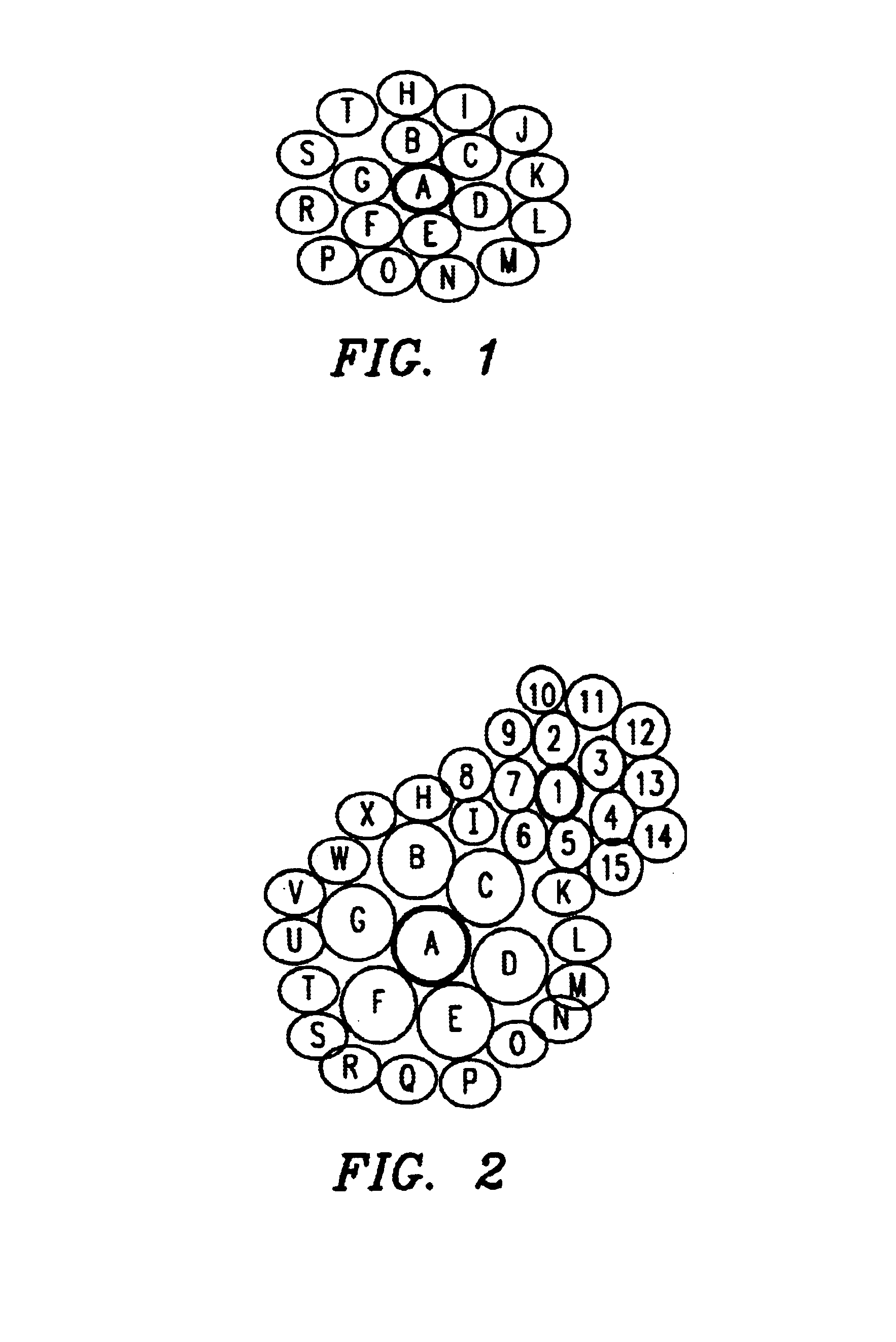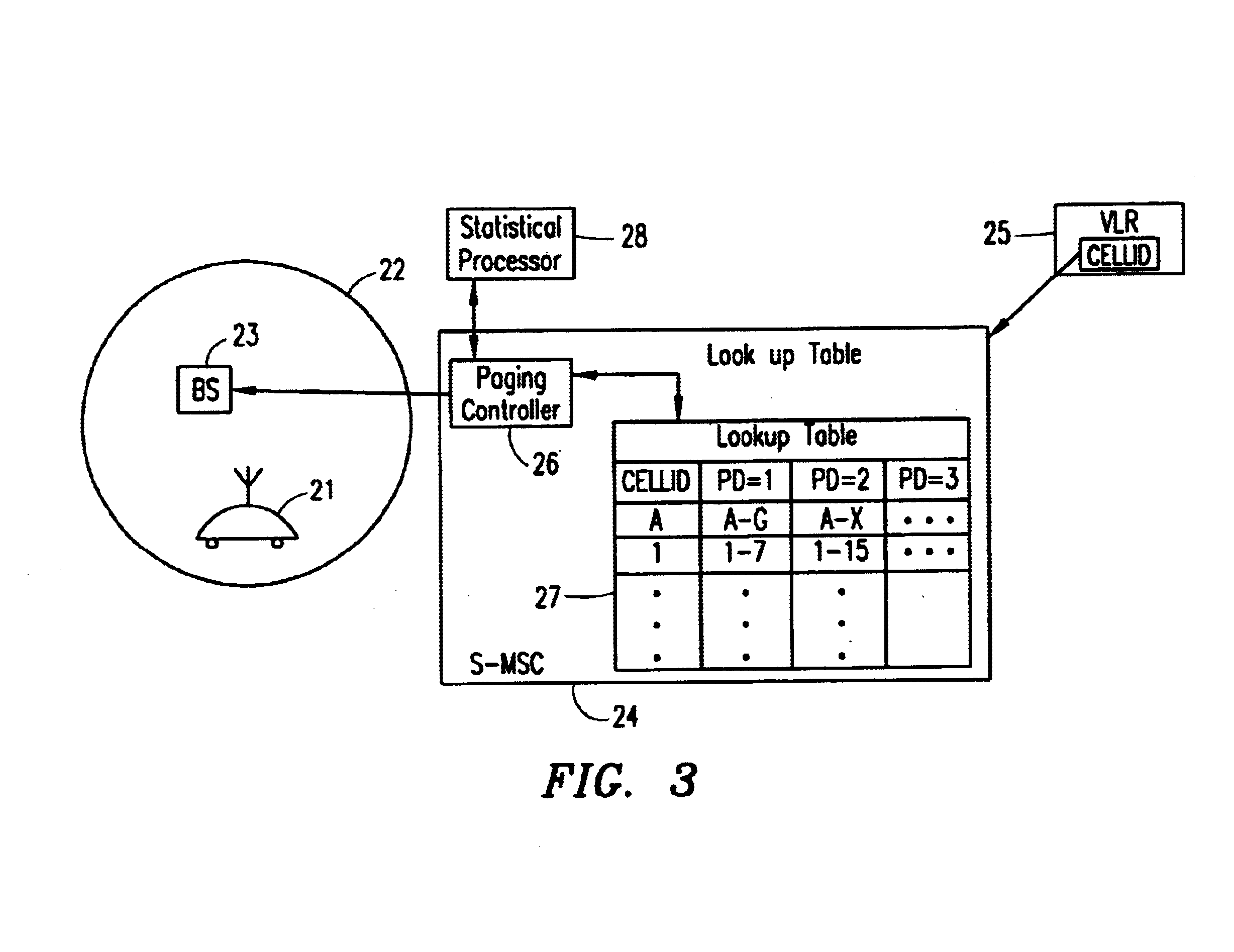Self-configurable paging system for a cellular telecommunications network
a cellular telecommunications network and self-configurable technology, applied in the field of telecommunication systems, can solve the problems of large system resources for the first page attempt, large waste of resources for paging in an entire la, and time-consuming and resource-intensive operations
- Summary
- Abstract
- Description
- Claims
- Application Information
AI Technical Summary
Problems solved by technology
Method used
Image
Examples
Embodiment Construction
The present invention utilizes the existing concept of paging at different Paging Depths (PDs), and adds the capability to the system to self-configure the PD on a per-cell basis. The PD is the number of layers of neighbor cells which are used to perform a page. For example, if only a cell and its adjacent neighbor cells are used to perform a page, the PD=1; if the cell, its neighbors, and its neighbors' neighbor cells are used, the PD=2.
Over time, the system collects and analyzes statistics on the paging efficiency and success rate at finding MSs at different paging depths for each cell. The PD for each cell is then automatically varied, depending on the PD that has been shown to be most efficient in locating MSs for each cell. The system calculates a paging efficiency relating to the percentage of mobile stations found, and calculates a success rate relating to the percentage of paging attempts that are successful at finding a mobile station on the initial paging attempt at a part...
PUM
 Login to View More
Login to View More Abstract
Description
Claims
Application Information
 Login to View More
Login to View More - R&D
- Intellectual Property
- Life Sciences
- Materials
- Tech Scout
- Unparalleled Data Quality
- Higher Quality Content
- 60% Fewer Hallucinations
Browse by: Latest US Patents, China's latest patents, Technical Efficacy Thesaurus, Application Domain, Technology Topic, Popular Technical Reports.
© 2025 PatSnap. All rights reserved.Legal|Privacy policy|Modern Slavery Act Transparency Statement|Sitemap|About US| Contact US: help@patsnap.com



